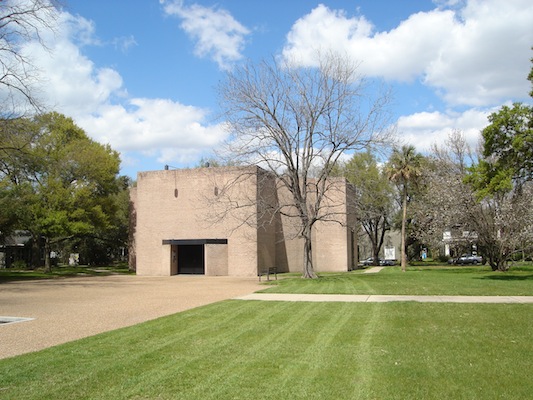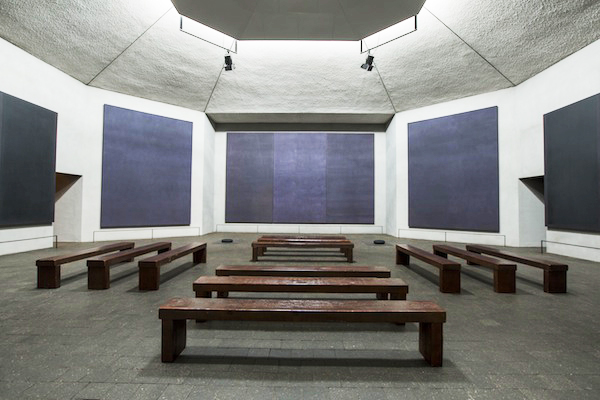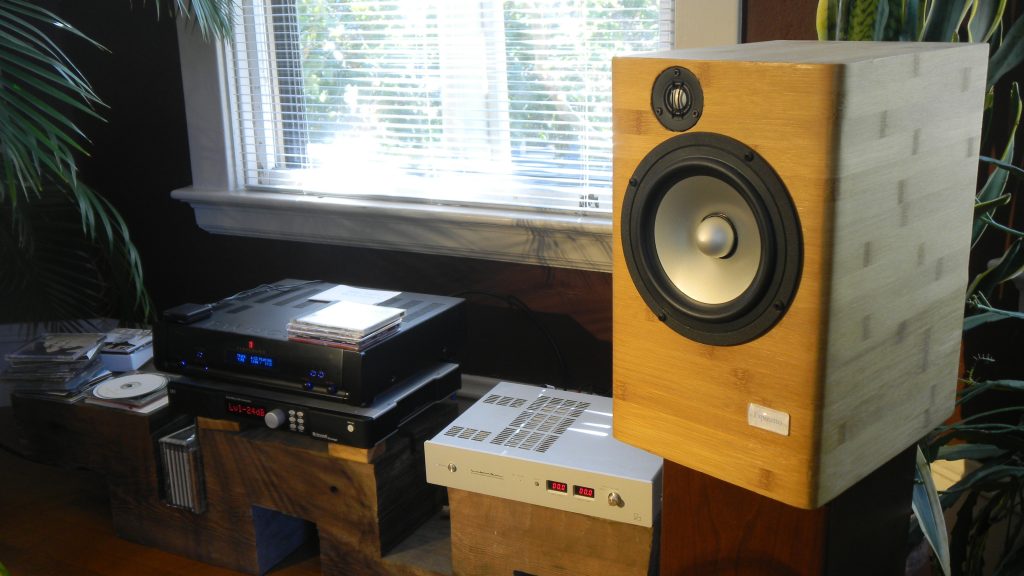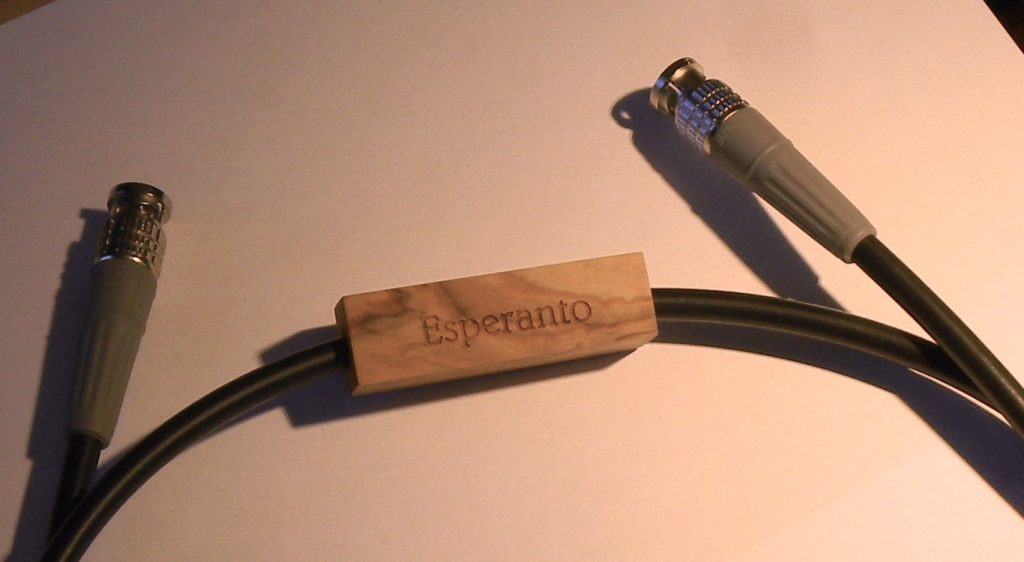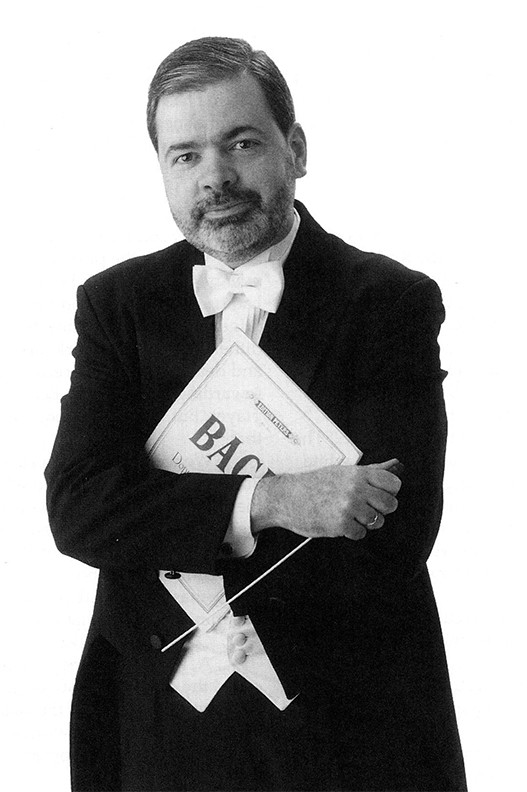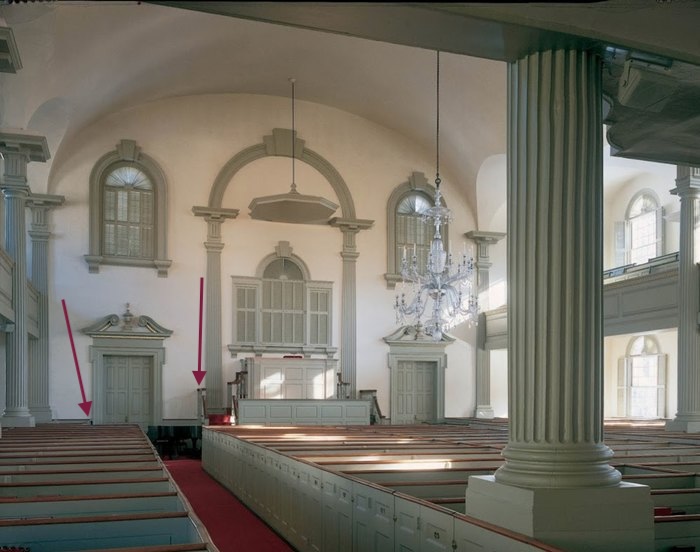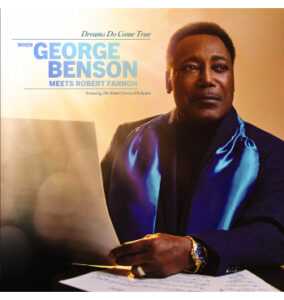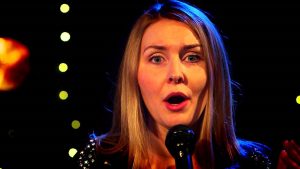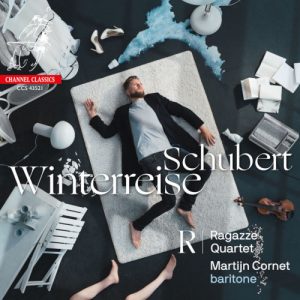Our fellow voyager and good audio friend, the esteemed John Marks, he of The Tannhauser Gate blog site, strikes out in a direction in this article that speaks to me. It's the moving and deeply inward world of Morton Feldman's Rothko Chapel, a commissioned composition both celebrating and creating the spiritual framework for the edifice of that name in Houston, Texas.
The composition and the performance thereof in the YouTube video below is haunting, and brings to me all of the blessings of melancholy introspection and calm reflection...especially on this cool, crisp, and overcast autumnal day here in Portland, Oregon. (There are so many, which suits my soul just fine.)
I was blessed by the reading and the listening; you can be too.
Dr. David W. Robinson, Ye Olde Editor
Morton Feldman's Rothko Chapel is scored for solo viola, solo alto voice, solo soprano voice, mixed chorus, and celesta; with percussion consisting of bass drum, chimes, gong, temple block, tenor drum, timpani, vibraphone, and wood block. Feldman (1926-1987) composed Rothko Chapel in 1971, specifically for the building of that name, in Houston, Texas, which was a gift to the public from the Ménil Foundation. The Rothko Chapel (Wiki) (Home Page) was designed to house and display 14 huge canvases the Ménil Foundation commissioned from the American Abstract Expressionist painter Mark Rothko (1903-1970).
My personal opinion is that Feldman's Rothko Chapel is one of the most magically organic pieces of modern music. But I can also easily envision the possible so-so (or negative) reactions, that the music was meant be the soundtrack to an aromatherapy session, or that the paintings are what happens when a depressive can only afford half-empty cans of house paint, in the dullest possible hues.
Both Rothko and Feldman declined to embrace the prevailing or at least most talked-about artistic trends—of self-conscious Modernism (such as Pop Art) in painting, and of 12-tone academic serialism in music. Even so, the challenging (or, numinous) nature of Rothko's paintings and of the music they inspired does force one to confront the question whether some mid-20th-century art was only "the Emperor's New Clothes." More below.
Photo by Mike Linksvayer from Oakland, California (Wikimedia)
The Rothko Chapel was one of many cultural projects conceived and funded by the husband-and-wife team of Dominique and John de Ménil. Born in Paris, Dominique was an heiress to the Schlumberger Limited oil-field-equipment fortune, but she was the polar opposite of F. Scott Fitzgerald's "Idle Rich." She studied math and physics at the Sorbonne; and, having developed an interest in film-making, went to Berlin, where she worked as Joseph von Sternberg's script assistant during the filming of Blue Angel. Which must have been a lot of work, because in the early days of talking pictures, "dialog replacement" was not possible (Blue Angel was filmed in late 1929 and early 1930; it was Germany's first feature-length "talkie"). So, every scene had to be shot twice, first in German and then in English.
Upon the fall of France and the Nazi occupation, Dominique and her husband John, a banker, emigrated to the United States and settled in Houston, Texas. Dominique had converted to Catholicism, and she and her husband shared a vibrant interest in the intersection of spirituality and art. The most prominent examples being their interfaith chapel, the Mark Rothko paintings it houses, and Morten Feldman's musical work they commissioned that was inspired by and intended to be heard in that space.
Rothko Chapel, Houston, Texas. Photo by Runaway Productions; additional image processing by David W. Robinson.
There's a story that when President Harry Truman, in 1947, saw some Modernist paintings the State Department had bought for a traveling exhibit, he commented, "If that's art, I'm a Hottentot." While 1947 was when Jackson Pollock began experimenting with his "drip" technique, I doubt that the exhibit included any Pollock drip canvases. However, whatever the State Department's new paintings were, they failed to impress Truman; and I don't think it's hard to figure out why.
"Ordinary people" have rather traditional (or common-sense) criteria by which to evaluate visual art. In their defense, I can say that I believe there would be a major overlap between Harry Truman's criteria and those of an Italian Renaissance prince, or of a prosperous Dutch merchant of Holland's Golden Age (circa 1570-1650).
Harry Truman, the prince, and the merchant all expected that art:
Would be the result of unusual skill, and the expenditure of a substantial amount of dedicated labor.
In other words, if "it's art," the phrase "My kid could have done that" does not ring true.
I doubt that anyone has ever said, "My kid could have done that" about Vermeer's "The Music Lesson." (The link is to an HQ image.)
Would be created from high-quality materials, and enhanced (or valorized) with conspicuously expensive materials. The gold standard, of course, is painting with oils rather than watercolors (or sketching with charcoal); and the oil painting will look naked to its intended audience or buyer without an elaborate gilded frame.
(These factors of course open up the Pandora's Jar of exactly what it is that the patrons are paying for; but that's not important for this discussion. The fact remains that there is a hierarchy of visual art, and you can see it at work in most large museums all over the world.)
Would faithfully represent something real, that is meaningful to the intended audience.
Whether it's a room, a person, a horse, a dog, a landscape, or a group of friends, representational art is what over time, most Western art buyers—even impecunious college students—have wanted on their walls. Van Gogh's Starry Night and Sunflowershave been sold as reproductions millions of times, because: they represent things people can relate to (or project into).
I put a large print of Turner's Boats Carrying out Anchors and Cables to Dutch Men of War, in 1665 (exhibited 1804) up on a wall of my room in college one year. There was something about its perspective and composition and colors that spoke to my mood.
And I think that that last bit is the key to why collectors today will pay tens of millions of dollars for a large Rothko painting, despite that fact that many people would be tempted to say, "My kid could have done that."
The crux of the matter is that Pollock, Rothko, and other Modernists did not want to use realistic depictions of real objects to trigger emotional responses. They wanted to bypass the rational mind—to "cut out the middleman"—and speak directly to the unconscious mind (or to the Jungian collective unconscious). And for that to be able to happen, the conscious mind has to step back, or at least to suspend judgment.
Rothko's huge dark canvasses remind me of a particularly Spanish form of Catholicism (or at least, of a particularly Spanish form of Catholic art). In that regard I am thinking specifically of Zurburán, whose symbol-laden still life Still Life with Lemons, Oranges and a Rose inspired Morten Lauridsen's requiem Lux Æterna.
Feldman's Rothko Chapel similarly conveys an awareness of grief, but also the sense of being outside time. I know of nothing else like it.
Jacqui Shine wrote an extraordinary essay for the New York Times magazine about taking a trip to Houston for the sole purpose of being inside the Rothko Chapel to grieve over the tenth anniversary of her mother's death. I recommend you click on the link and read the whole thing; but the conclusion is something I simply cannot do without quoting:
The Rothko Chapel is a lonely place. We need lonely places, but it helps to know that they're lonely for everyone. We all have mothers, and we all lose them, though never in the same way. I watched shadows move across the paintings and the floor and our bodies. This felt, for a minute, like relief.
And, if you can bear it, please do read the NYT reader comments… . Ms. Shine's self-revelation touched many a nerve.
Another thing worth reading is Alex Ross' The Rest Is Noise, on Feldman's semi-explanation of this work, given in 1972.
The video above was shot in Speyer Cathedral (begun A.D. 1030). Marcus Creed and the SWR Vokalensemble Stuttgart do have an excellent CD release (Hänssler Classic 93306) combining a performance of Rothko Chapel in a different church (Christuskirche Gänsheide, Stuttgart) with works by Barber, Bernstein, Cage, and Copland.
Morten Feldman's Rothko Chapel is a work that is necessary for cultural literacy; not just cultural literacy in modern music, but cultural literacy in music in general. I most highly recommend the linked-to CD; but if you no longer do that, the Creed/SWR Vokalensemble Stuttgart performance can be found on Tidal's streaming service.
(By the way, another piece of music inspired by the Rothko Chapel is "Fourteen Black Paintings" from Peter Gabriel's 1992 album Us.)




